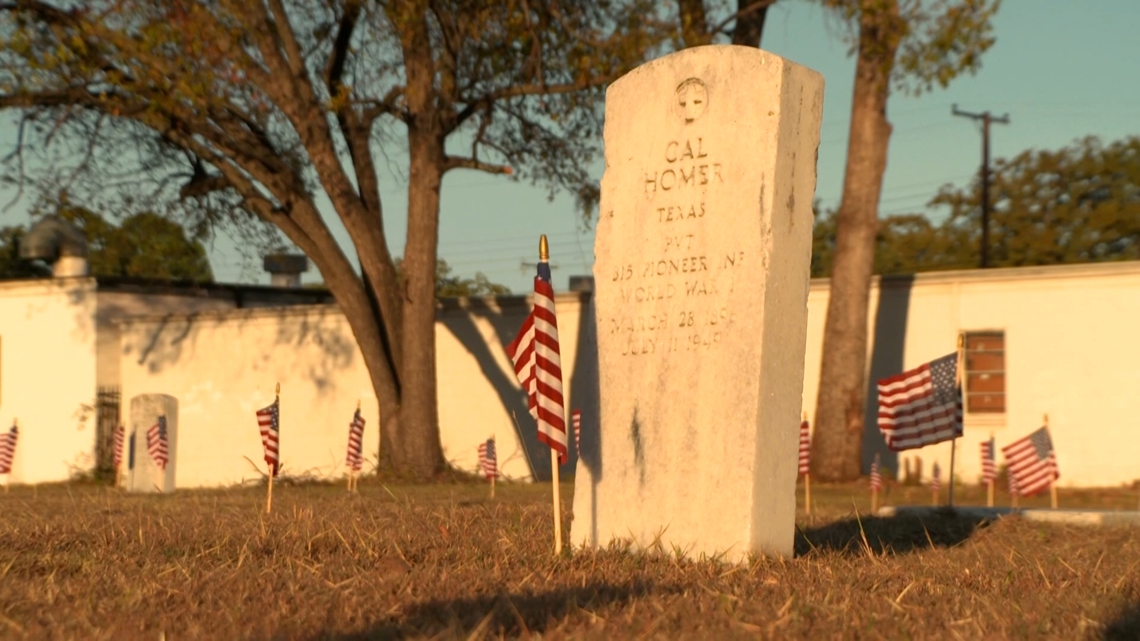Beneath the overgrown grass at New Trinity Cemetery in Tarrant County, the headstones of more than 500 Black veterans were uncovered.
TARRANT COUNTY, Texas — Beneath the overgrown grass at New Trinity Cemetery in Tarrant County, the headstones of more than 500 Black veterans known as Buffalo Soldiers were uncovered.
The cemetery, believed to be the first Black burial ground in Tarrant County, has undergone a months-long restoration led by the Tarrant County Sheriff’s Office Labor Detail Unit, the American Legion Post 655, and the New Mount Rose Baptist Church.
“When you first came out here, it was upsetting,” said Officer Kelley Jenkins who led the cleanup project with the sheriff’s office. “These guys could be sitting in jail, but they’re out here with us, and they’re a part of history now.”
The Labor Detail Unit is made up of men and women serving sentences for misdemeanors through community service rather than incarceration. Over several weeks, they cleared brush, repaired damaged headstones and restored a cemetery that had fallen into disrepair.
Among the graves uncovered was that of Florence Marie Rawls, a member of the 6888th Central Postal Directory Battalion, the predominantly-Black, all-female battalion deployed overseas during World War II.
“Buried beneath large oak trees and brush, they discovered the headstones of more than 500 Buffalo Soldiers, Black men and women who served in wars.
Community leaders gathered this week for a rededication ceremony on Veterans Day to honor the soldiers laid to rest there.
“They never received their honor in life, so we’re gonna make sure they receive it in death,” said Pastor Kyev Tatum.
The initiative highlights two goals of the sheriff’s office’s Labor Detail program: giving back to the community while giving participants a second chance.
“When honor is due, you give honor,” Tatum said. “We’ve discovered there’s no other place in Texas where that many Buffalo Soldiers are buried in the cemetery, except for the DFW national cemetery.
New Trinity Cemetery now stands as both a memorial and a message that history, when restored, can heal.

